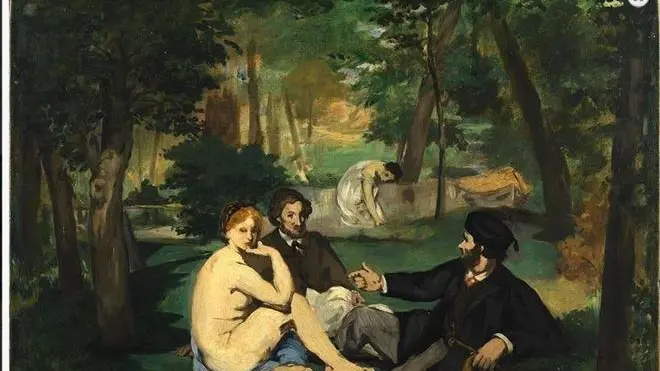Manet, the return to Venice: the great exhibition

Manet. Return to Venice is the title assigned to the exhibition hosted by the Fondazione Musei Civici di Venezia from 24 April to 18 August 2013 in the monumental halls of Palazzo Ducale: an exhibition of around eighty different paintings, drawings and engravings, designed with the special collaboration of Musée D'Orsay of Paris, the institution that houses the most masterpieces by this extraordinary painter, the young Manet.
The exhibition has been developed due to the need for a critical investigation of the cultural models that inspired the young Manet over the years of his early start to painting.
These models, which as of today almost exclusively referred to the influence of Spanish painting over his art, were, by contrast, rather close to Italian Renaissance painting, as will be shown by the Venetian exhibition at which the public will be able to admire, alongside his masterpieces, some exceptional works inspired by the great tableaux of sixteenth century Venetian painting, from Tiziano to Tintoretto and Lotto in particular.
The exhibition path. The exhibition itinerary, which covers the whole of his artistic life through great masterpieces like Le fifre (1866), La lecture (1865-73), Le balcon (1869), Portrait de Mallarmé (1876 ca), opens with a series of free interpretations of ancient paintings, fresco paintings and sculptures that Manet saw during his first two trips to Italy in
1853 and 1857. The Venetian influence shines through immediately, inseparable from the boldness with which the painter probes contemporary instances and ducks out of academic convention.
The Italian influence. His still lifes, behind their faithfulness to the Dutch formulae, hold a great deal of surprises in store, which not only recall the Northern tradition, but would also appear to have been inspired by an all-Italian chromatic and constructive vigour.
If Le Déjeuner sur l’herbe and Olympia (1863) are clearly variations on Tiziano and two wonderful pieces of evidence of Manet’s relationship with Italian art, there are also a great many examples of profound knowledge of the inheritance of Venice, Florence and Rome, by the great painter, as the exhibition will reveal.
Riproduzione riservata © La Nuova Venezia









